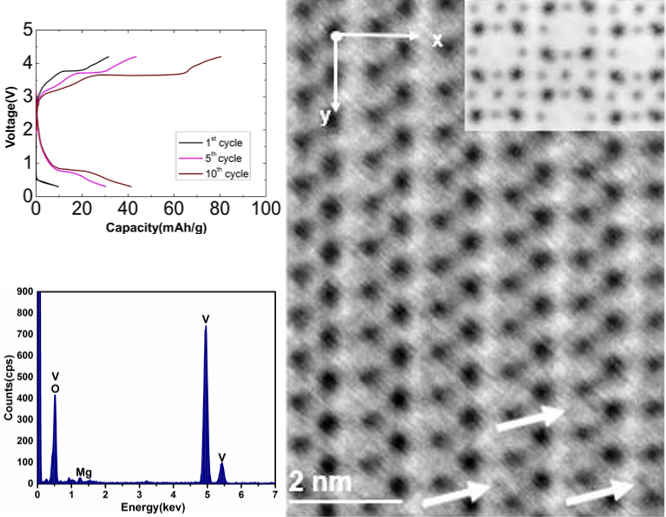
Scientific Achievement
We examine the effects of Mg intercalation into α-V2O5 using atomic-resolution scanning transmission electron microscopy (STEM) and electron energy-loss spectroscopy. The position of intercalated Mg within the V2O5 unit cell is directly identified using annular bright-field imaging, and found to be in agreement with prior density-functional theory models.
Significance and Impact
We demonstrate that electrochemically cycled α-V2O5 exhibits the formation of the local ε-Mg0.5V2O5 domains, with the Mg occupancy sites seen experimentally consistent with theoretical predictions. While the global Mg intercalation levels are low, the local concentration is high enough to be imaged directly using STEM.
Research Details
- Electrochemical cycling of orthorhombic α-V2O5 cathode in a full cell with Mg metal anode and low water content electrolyte.
- Chemically synthesized sample representative of full Mg insertion showed formation of δ-MgV2O5 phase.
Work performed at University of Illinois at Chicago (JCESR partner) and Argonne National Laboratory (JCESR managing partner) by A. Mukherjee, N. Sa, P.J Phillips, A. Burrell, J. Vaughey, R.F Klie, Chem. Mater., 2017, 29,2218-2226

